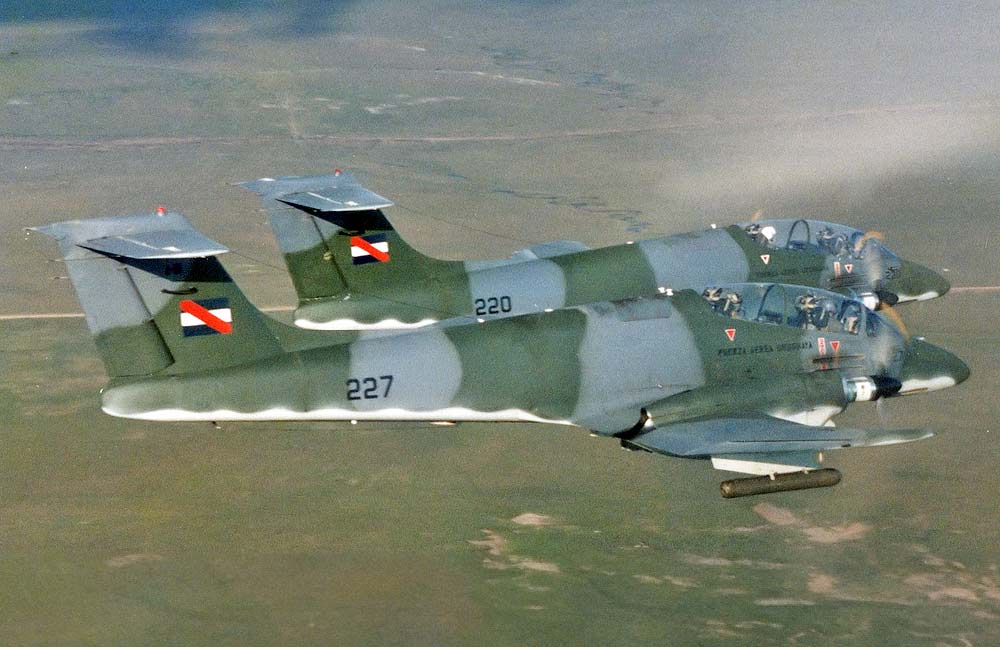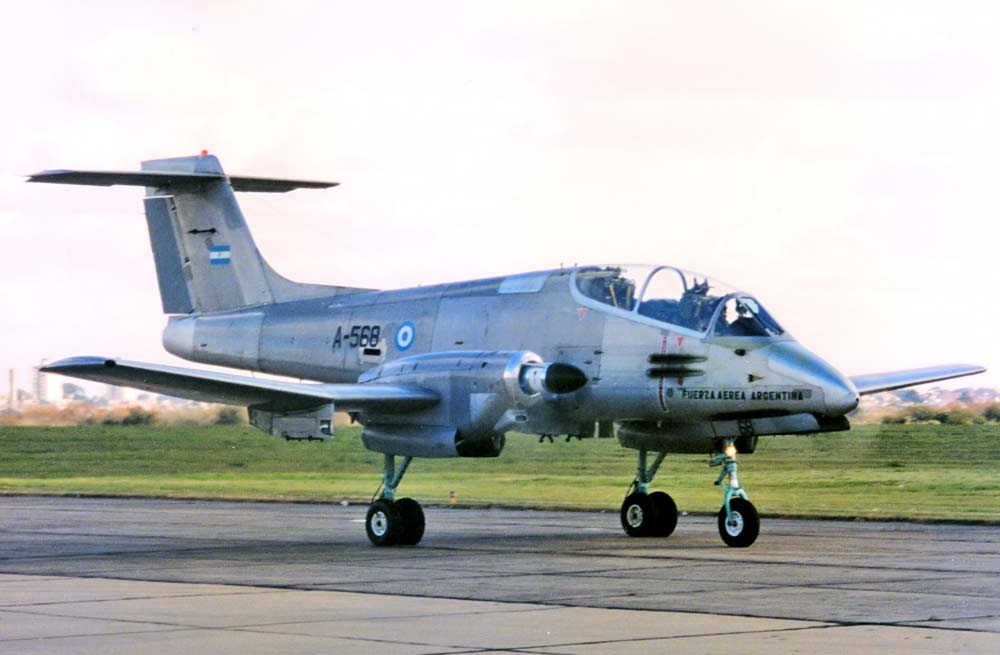Argentine twin-turboprop, counter-insurgency aircraft, known for rugged low-altitude operations.
In brief
The FMA IA-58 Pucará is a robust counter-insurgency aircraft designed and produced by Argentina’s Fabrica Militar de Aviones. It is equipped with two Turbomeca Astazou XVIG engines, each delivering up to 978 horsepower. The Pucará features a tricycle landing gear system and is capable of operating from rough, unprepared airstrips. It is armed with twin 20mm cannons and has provisions for bombs, rockets, and machine guns, making it suitable for a variety of ground attack roles.

History of the Development
Development of the FMA IA-58 Pucará began in 1966 in response to the Argentine Air Force’s need for an effective counter-insurgency aircraft. The design was influenced by the political and military challenges of the era, particularly the rise of insurgent groups within and around Argentina. The first prototype, known as the AX-2 “Delfin,” flew in 1969, and the aircraft entered production after successfully meeting the Air Force’s requirements for a versatile and durable low-altitude fighter capable of close air support and reconnaissance missions. The Pucará was introduced into service in 1975.
Design of the FMA IA-58 Pucará (Fortress)
The IA-58 Pucará is a low-wing monoplane with a semi-monocoque fuselage constructed entirely from metal. It features a distinctive design with engine nacelles integrated into the wings, which are fitted with three-blade propellers. The cockpit accommodates two crew members and is equipped with zero-zero ejection seats, allowing for safe ejection at zero altitude and zero speed. Its design allows for excellent visibility and operability from short and rough airstrips, which is ideal for its intended roles.
Performance of the FMA IA-58 Pucará (Fortress)
The Pucará’s performance is characterized by its maximum speed of approximately 310 mph and a service ceiling of 31,800 feet. It has a range of over 2,300 miles, making it capable of extended operations without the need for frequent refueling. Its rugged design and powerful engines make it highly effective in its role as a ground attack aircraft, particularly in challenging environments.
Variants of the FMA IA-58 Pucará (Fortress)
Several variants of the Pucará were developed, including the IA-58A, which is the standard production model, and the IA-58B “Pucara Bravo,” which featured upgraded avionics and armament but was never mass-produced. The IA-58C “Pucara Charlie” was a single-seat version with further avionics improvements and additional armaments. The IA-66 variant featured upgraded engines for improved performance.

Military Use and Combat of the FMA IA-58 Pucará (Fortress)
During the Falklands War in 1982, the IA-58 Pucará was deployed by the Argentine Air Force mainly for reconnaissance and ground attack missions. The aircraft, primarily stationed on the Falkland Islands, played a significant role due to its ability to operate from short, unprepared runways, which were typical on the islands. Despite its robustness and agility at low altitudes, the Pucará faced considerable challenges against the technologically superior British forces equipped with advanced naval and air power, including Sea Harriers armed with latest missile technology.
One notable aspect of the Pucará’s deployment during the Falklands War was its vulnerability to British anti-air systems and fighter aircraft. Several Pucarás were lost in engagements with British forces, and while they managed to carry out numerous missions, their effectiveness was limited by the superior British technology and firepower.
Following the Falklands conflict, the IA-58 Pucará continued to be used by the Argentine Air Force and other countries, primarily in counter-insurgency roles. Its ability to operate in rugged terrain and perform a variety of missions from close air support to light attack made it a valuable asset in these contexts. In Sri Lanka, for instance, the Pucará was employed in the 1990s during the civil war against Tamil insurgents. Its performance in low-intensity conflicts highlighted its capabilities in COIN operations, though some were lost to MANPADS and ground fire.
In Uruguay, Pucarás served from the early 1980s until 2017, engaging in diverse roles from border patrol to intercepting illegal flights, showcasing their versatility beyond purely military applications.
Most recently, the Argentine Air Force has begun converting some of their remaining Pucarás into the IA-58 “Fénix” variant, repurposing these as surveillance platforms. This variant strips the aircraft of its attack capabilities, outfitting it instead with advanced radar and surveillance equipment suitable for border patrol and monitoring roles. This transition reflects a broader trend in military aviation of updating older aircraft to meet current operational needs without the high cost of acquiring new hardware.
–
The FMA IA-58 Pucará remains a testament to the ingenuity and capability of Argentine military engineering. Its versatility and durability have made it a valuable asset in counter-insurgency operations across several continents, reflecting its enduring legacy in military aviation history.
Back to the Fighter Jet section.